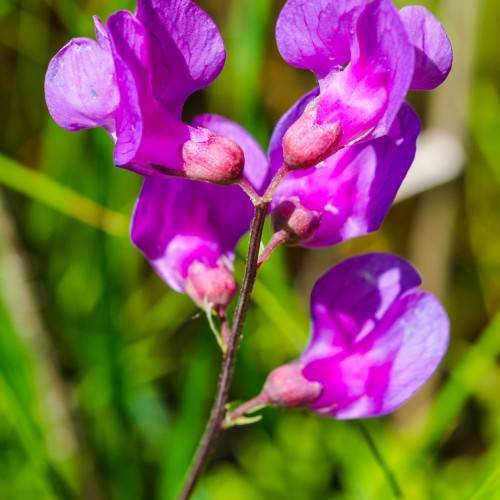
common vetch
Vicia sativa
Cycle:
Annual
Watering:
Frequent
Hardiness Zone:
3
Flowers:
Flowers In Spring
Sun:
Full sun only if soil kept moist, Part sun/part shade
Soil:
Well-drained
Fruits:
Fruits In Summer Ready In Summer
Edible:
Yes
Leaf:
Yes
Growth Rate:
High
Drought Tolerant:
Yes
Salt Tolerant:
Yes
Care Level:
Medium
watering
Broad bean (Vicia faba) plants should be watered regularly, aiming for an inch of water per week. The easiest way to ensure that your broad bean plants receive the necessary amount of water is to give them a deep soak every few days. This should be done by slowly and deeply watering the soil until it is damp to a depth of 12-24 inches (30-60 cm). Young, shallow rooted broad bean plants will need to be watered more frequently than established, deep-rooted plants. They may need to be watered daily to create a moist top layer of soil. Broadbean plants also benefit from occasional misting. This helps to promote healthier leaves and reduce wilting in extreme heat. If you live in an area with hot summer temperatures, mist the leaves in the morning or evening. In general, you should avoid overwatering as it can lead to root rot and other fungal diseases. Always check the soil prior to watering to make sure it is dry before applying more water.
sunlight
Broad bean plants best thrive in direct sunlight for at least 6 hours per day, but no more than 8 hours per day. If the plants are exposed to direct sunlight for longer than 8 hours, the broad bean plants may become weakened and susceptible to disease and pests. When planted in a spot with limited sunlight, the broad bean plants should be acclimated slowly over the first few days of exposure to ensure they can withstand extended periods of direct sunlight. During the summer months, the plants will appreciate some shade during the hottest parts of the day. Ultimately, the best location for a broad bean plant is 1 with access to 6 to 8 hours of direct sunlight.
pruning
Broad beans should be pruned just before their flowering season. To promote a better yield of pods, remove any excess foliage up to 60-70cm from the ground. Do not remove more than 1 third of the total foliage at any given time. Pruning should take place in late April/May and any dangling stems should also be removed. Any infested, discoloured or damaged stems should be cut to the ground. This will then encourage fresh new stems to form, while also enhancing the air circulation.
